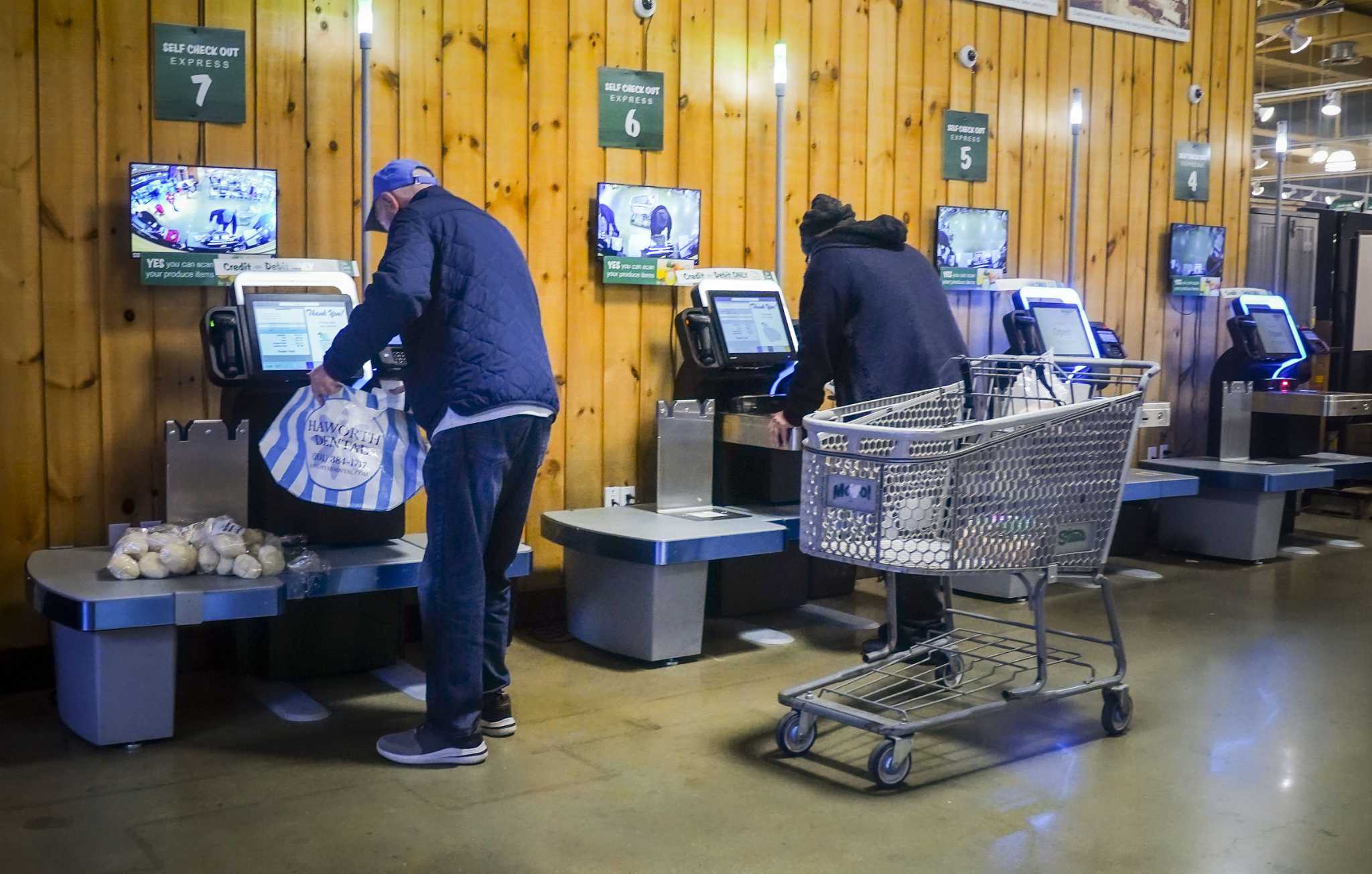
[ad_1]
NEW YORK (AP) — The promise of self-checkout was appealing. Customers can avoid long lines by scanning and bagging their items, employees are freed from doing those tedious tasks themselves, and retailers save on labor costs.
A lot has happened since the introduction of self-checkout, and this is no different. Customers are frustrated by clunky technology that spits out mysterious error codes, employees are forced to stand and monitor both humans and machines, and retail stores grapple with theft.
“Going to the grocery store used to be easy, but now it’s frustrating,” said Cindy Whittington, 66, of Fairfax, Virginia. “You’re paying more. You’re working hard to pay for the product at their store. And checking out has become an ordeal. You should be getting a 5% discount. .”
advertisement
Article continues below this ad
Self-checkout usage accounted for 30% of transactions in 2021, nearly double the number in 2018, according to a survey of retailers by industry group FMI. Additionally, 96% of retailers surveyed offer self-checkout.
But the technology is also facing tough reviews during the crucial holiday shopping season. Some retailers are adding restrictions, while others are pulling back entirely.
Walmart removed self-checkout kiosks at three stores in Albuquerque, New Mexico, this fall as part of a location-by-location approach, but overall it’s adding more than taking away. To reduce wait times, Target is currently limiting the number of items shoppers can scan to 10 in a small number of its stores nationwide.
British supermarket chain Booths has been removing self-checkout from most of its stores for the past 18 months after a backlash from customers. A year ago, grocery chain Wegmans discontinued its self-checkout app, which allowed shoppers to scan and bag items while shopping, citing “losses.” However, we continue to offer self-checkout at our stores.
Self-checkout was first tested in supermarkets in the late 1980s and gained momentum two decades ago. But grocers increased that amount even more three years ago to deal with severe labor shortages caused by the pandemic.
advertisement
Article continues below this ad
The Bureau of Labor Statistics says that technological advances such as self-checkout and online sales are the main drivers of the decline in cashier jobs, but there are no accurate estimates of how many cashier jobs have been replaced by self-checkout. do not. According to Department of Labor data, about 1.2 million people currently work as cashiers, compared to 1.4 million in 2019, and the BLS expects that number to decline by another 10% over the next decade.
“We’re at a tipping point, and if Americans are willing to do this and show interest, stores will probably do it because they want to cut labor costs,” said Christopher Andrews, associate professor and dean of sociology at Drew University. It will expand,” he said. Author of “The Overworked Consumer: Self-Checkouts, Supermarkets, and the Do-It-Yourself Economy.” “But now they’re only seeing the downside. They’re seeing dissatisfied customers. They’re seeing increased costs and shoplifting.”
Yes, theft is a problem. Andrews said technology that relies on shoppers scanning and entering the quantity of items themselves could tempt even law-abiding citizens to be dishonest. It’s easy for him to scan every other item or enter the code for a cheaper item. Shoppers can also make honest mistakes that can lead to losses for your store.
John Catsimatidis, chairman and CEO of Red Apple Group and owner of Gristedes & D’Agostino grocery store in New York City, is not interested in self-checkout because of theft. he said.
“Anyone who does that is as good as hitting someone over the head with a pipe,” he said.
advertisement
Article continues below this ad
Still, self-checkouts will not be phased out, especially as labor shortages remain persistent. And many people love it.
Ellen Wolfhorst, 65, said using the self-checkout register reminds her of her childhood, when she played with toy registers.
“There’s something childish and fun about it,” Wolfhorst says. “When you slide the product onto the reader, it beeps and it’s very exciting. There’s a certain satisfaction in that.”
Self-checkout makes the shopping experience easier for Robin Whisman Doherty of South Salem, New York, who has a progressive neurodegenerative disease and uses a walker.
The 67-year-old said she likes shopping at Stop & Shop. That’s because Stop & Shop has “scan-and-go” technology that allows customers to use their device to scan items and tally their bills while shopping. She can pay at a kiosk or a manned register.
advertisement
Article continues below this ad
“Laser guns are also effective for people with disabilities,” she said.
Stu Leonard Jr., president and CEO of Stu Leonard’s, a supermarket chain with stores in Connecticut, New York and New Jersey, says 25% of his customers use self-service. He said that This number could reach 50% in the next few years. He noted that a third of registers were unmanned, but said they were currently in a “holding pattern” and were looking to limit the number of items scanned.
Retailers are adding cameras and sensors to kiosks to monitor shoppers.
For example, Kroger has installed artificial intelligence technology in most of its stores that alerts you when something goes wrong. For example, if a shopper is unable to successfully scan a particular item, the system flags the error on-screen and prompts the customer to self-correct. If a customer is unable to resolve the issue themselves, a light above the self-checkout register will flash to get the employee’s attention.
More advanced technology is being introduced.
advertisement
Article continues below this ad
Amazon’s “Just Walk Out Technology” has been implemented in more than 70 Amazon-owned stores and more than 100 third-party retailers across the U.S., including at airports. It uses high-powered cameras and allows shoppers to check in using Amazon’s app on their phones and then leave. Japanese fashion retailer Uniqlo is embedding his RFID chips in price tags to operate his self-checkout system at his Fifth Avenue store in Manhattan as part of a major rollout in stores. Masu. – Service stations and payments – no need to scan items.
Still, for some employees who were supposed to be relieved of the drudgery of calling customers, boredom comes in a different form.
Bernadette Christian, 59, who works at Giant Food in Clinton, Md., is in charge of six self-service stations at a time, helping shoppers who have become more irritable since the pandemic. afraid to stand up.
“It would be easier for us to be cashiers, and it would be much safer in today’s world,” she said.
[ad_2]
Source link







